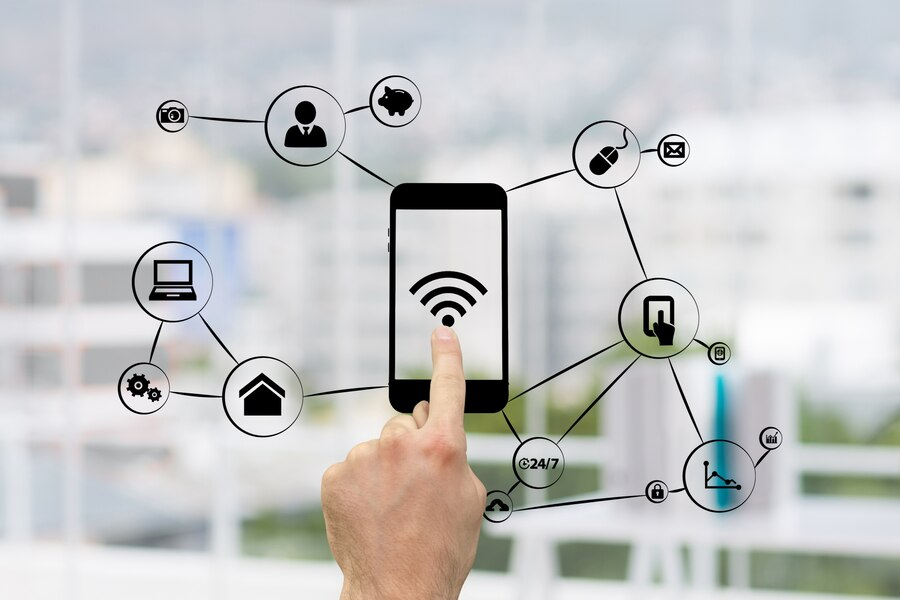5G is here and it promises to be faster, reliable and more efficient than the previous 4G network. But what is its performance when we compare it to Wi-Fi? There’s been a lot of talk about 5G vs Wi-Fi and if you’re also curious to know the difference between the two, keep reading this blog.
Buy Airtel Prepaid with exciting benefits!
What is 5G?
5G is the next generation of mobile internet connectivity. It will be faster, more reliable and efficient than 4G, enabling a wide range of applications and services that require low latency such as self-driving cars, smart cities and healthcare. It will also support the increasing number of devices that connect to the internet through connected cars, connected homes and wearables such as fitness trackers or smart watches.
Must Read: An Encyclopedia of 5G technology: What, Why and How?
A New Breed of Internet Connectivity: The Fifth Generation
5G will allow operators to offer new services like virtual reality gaming on your smartphone or home healthcare monitoring from anywhere in your house, all at superfast speed. 5G speeds can reach up to 10 times faster than 4G, so you can download an HD movie in seconds on your phone instead of minutes. With 5G, you can download a file at over 1 gigabit per second (1 Gb/s). It’s also comparable with some cable internet connections and is several times faster than 3G networks. It uses new technology and techniques to handle a greater number of devices at once, which means less time trying to connect to the internet and more time using it for whatever you want.
What is WiFi 6?
Wi-Fi 6 is the latest Wi-Fi protocol or wireless technology that can support the ultra-fast speeds offered by 5G and provide more reliable connections in crowded areas. It also supports more devices on a single network than previous generations at one time without slowing down performance or causing interference issues for users. Wi-Fi 6 can deliver 4x higher capacity and 75% lower latency.
Moreover, it offers nearly triple the speed of its predecessor, Wi-Fi 5. It has many benefits over previous generations of wireless technology. It’s faster, it works better in congested areas where there are many devices trying to connect like an airport, and it supports more devices at once while still maintaining fast speeds for each device connected.
5G Cellular vs Wi-Fi
Wi-Fi has been around for a while, but 5G is the newest arrival in the block. It promises to be faster and more secure than previous wireless technologies. It’s already starting to show up in some areas. But how does 5G compare with Wi-Fi?
5G is the fifth-generation cellular network that promises to be the fastest, most powerful, and most secure technology yet. It’s not the same as Wi-Fi; it’s a wireless technology that uses radio waves to deliver data. The main advantage of 5G is its speed; it can help you stream your favourite movies without buffering or downloading gigabytes of content in seconds. Whereas Wi-Fi has a lower cost to deploy, maintain and scale. Also, it will continue to be the predominant technology for home and business environments. Wi-Fi has the ability to provide exceptional support for dozens of data-hungry devices, like PCs, smartphones, streaming devices, TV sets, etc.
Moreover, because there’s so much data being transferred over 5G networks, it needs new ways to manage this traffic so that everyone gets their share of bandwidth. That is why, 5G will also be able to learn your preferences automatically based on what devices do with their bandwidth when connecting over 4G today.
Furthermore, 5G and Wi-Fi 6 are similar in many ways, but there are also some important differences between them.
Difference Between 5G Cellular vs Wi-Fi:
Speed
5G networks offer data transmission speeds that are up to 20 to 30 times faster than those offered by 4G LTE. This means that you can stream videos at full HD quality, play games online and download large files much more quickly with a 5G connection.
Wi-Fi 6 offers comparable speeds to 5G, up to 10 times faster than the current standard, but it operates on a wider range of frequencies, making it easier for people to connect their devices together in homes or public spaces.
Both technologies allow wireless data coverage outdoors, something that has traditionally been challenging when using other wireless standards. In addition, they both work indoors where traditional wireless connections have been available.
Wi-Fi can be of many types
There is no single type of 5G connectivity, but there are multiple types of wireless networks or Wi-Fi as it’s commonly known. 5G is the fifth-generation cellular network, while Wi-Fi 6 is a wireless networking protocol designed to support it. However, they do work together to provide faster speeds and more reliable connections.
Network Management Differences
The two technologies, 5G and Wi-Fi handle network management differently. Wi-Fi uses an unlicensed spectrum whereas 5G networks are managed by operators and use a dedicated licensed spectrum. The new standard also supports 802.11ax wireless docking. These features will help maintain smooth connectivity even when there are many devices on your network at once like during peak times when everyone has gotten home from work and wants to stream their favourite shows on Netflix over dinner before bedtime!
Also, Wi-Fi connections and cellular connections can work together to give you access to even more devices at once with much faster speeds than ever before. Some applications for 5G and Wi-Fi 6 will also involve the Internet of Things (IoT).
Conclusion
Both Wi-Fi and 5G connectivity have their pros and cons, but it’s important to remember that these technologies work together. You don’t need to choose just one or the other. You can use them both at once for a better experience. Majorly, where the user experience is concerned, both 5G and Wi-Fi 6 offer gigabit speed and low latency. However, Wi-Fi will remain the most efficient way to connect a large number of devices throughout the home or office spaces.


 Get App
Get App  Airtel Store
Airtel Store  Login
Login 


